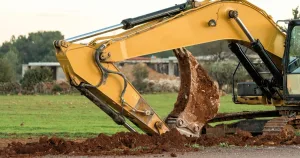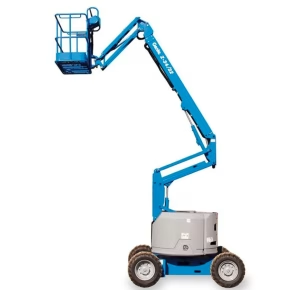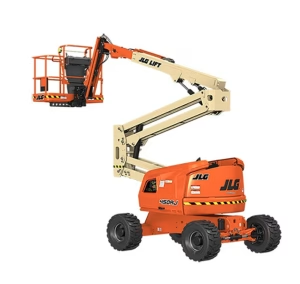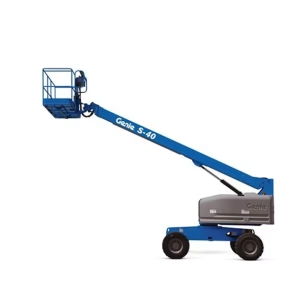Minimizing Machine Downtime for Successful Projects

In the bustling world of equipment rental, sales, and services, minimizing equipment downtime is crucial. Whether you’re managing heavy machinery, construction equipment, or industrial tools, every minute of downtime impacts productivity, profitability, and customer satisfaction. In this article, we’ll explore the various facets of equipment downtime, its causes, and effective strategies to mitigate its impact.
What Is Equipment Downtime?

Equipment downtime refers to the period when machinery, vehicles, or facilities are not operational due to maintenance, repairs, breakdowns, or other unforeseen events. It disrupts production schedules, delays projects, and incurs costs. Understanding the true implications of downtime is essential for optimizing operations.
In the fast-paced world of construction, manufacturing, and logistics, equipment downtime can be a costly nightmare. While the immediate repair expense might seem like the biggest concern, the true cost of unplanned downtime extends far beyond a simple mechanic’s bill.
In other words, there are hidden financial penalties, productivity roadblocks, and reputational damage caused by equipment breakdowns.
For instance, if a dozer that costs $34,000 annually is planned to run for 1,200 hours at a rate of $30 per hour, any unplanned downtime can significantly impact profitability. At an unplanned downtime rate of 30%, the recoverable cost dips to just over $25,000, costing the company around $9,000 per year.
But that is just the cost that pertains to the equipment itself. Equipment downtime is not just about the direct repair costs. When equipment fails unexpectedly, it leads to a ripple effect of additional expenses. These include:
- Idle Workers: Workers can’t perform their tasks without the necessary equipment, but they still need to be paid for their time.
- Rush Shipping for Parts: If the required parts aren’t readily available, companies often have to pay extra for rush shipping.
- Rental Costs: To keep the project on schedule, companies may need to rent equipment, adding to the overall costs.
- Penalties for delays: Many contractors and property owners will charge penalties to the subcontractors that fail to meet deadlines.
- Reputational damage: Similarly, failing to reach deadlines can cause serious damage to construction in regards to their reputation. The less reputation, the harder it is to get new bids and contracts.
If we take all of these factors into consideration, we’re looking at $20,000 to $40,000 dollars lost, per equipment, yearly, in unplanned equipment downtime.
The Financial Domino Effect
The financial impact of unplanned downtime is a multi-faceted issue. Every idle minute translates to lost revenue. Whether it’s a stalled construction crane or a grounded delivery truck, your earning potential is on hold. Furthermore, unexpected breakdowns necessitate urgent repairs, often at a premium compared to scheduled maintenance costs. Technicians and mechanics spend valuable time troubleshooting and fixing the issue, adding labor costs to the equation. In the rental business, downtime can force you to provide replacement equipment to maintain customer satisfaction, incurring additional expenses.
Beyond the Bottom Line: Productivity and Project Delays
The consequences of unplanned downtime extend far beyond the financial realm. Project schedules get disrupted, impacting deadlines and potentially incurring penalties for late deliveries. Construction sites, manufacturing floors, and warehouses all rely on seamless equipment operation. When machinery goes down, so does worker productivity. Idle workforces are forced to wait or perform non-essential tasks, hindering overall project efficiency.
Customer and B2B reputation
Unplanned downtime carries a significant reputational risk. Clients and partnered businesses become frustrated by missed deadlines, delayed deliveries, and interrupted services. In the competitive world of business, such disruptions can tarnish your professional image and erode customer trust. Rental agreements often come with uptime guarantees, and failing to meet these terms can strain relationships with your clients.
The Root of the Problem: Causes of Equipment Downtime
There are two main culprits behind unplanned equipment downtime: mechanical failures and unforeseen events.
-
Mechanical Failures: Over time, components wear down, leading to breakdowns. Inadequate or irregular maintenance schedules exacerbate this wear and tear, increasing the likelihood of sudden failures.
-
Unplanned Events: Extreme weather conditions can affect equipment performance. Operator errors, such as improper handling or misuse, can also lead to breakdowns. Supply chain disruptions can delay the arrival of critical repair parts, extending downtime periods.
Taking Control: Strategies to Minimize Downtime
The good news is that you can significantly reduce the risk of unplanned downtime through proactive measures. Here are key strategies to consider:
-
Proactive Maintenance: Implement a comprehensive maintenance program that includes regular inspections, oil changes, and adjustments. Additionally, explore predictive maintenance techniques that leverage data and analytics to anticipate potential problems before they occur.
-
Invest in Training: Educating your operators on proper equipment usage and care can go a long way in preventing breakdowns caused by misuse.
-
Optimize Inventory Management: Maintain a readily available stock of critical spare parts to minimize downtime during repairs. Building strong relationships with reliable suppliers ensures timely deliveries of replacement parts when needed.
-
Real-Time Monitoring: Embrace the power of technology. By deploying Internet of Things (IoT) sensors on your equipment, you can remotely monitor its health and performance. This allows for early detection of potential issues and swift preventative action. Set up automatic alert systems to notify you of any anomalies that could lead to future failures.
-
Be Prepared for the Unexpected: Develop contingency plans to address unexpected downtime scenarios. Having well-trained technicians on standby ensures a rapid response and minimizes repair time.
By prioritizing proactive maintenance, investing in training, optimizing inventory management, leveraging real-time monitoring, and having a solid response plan in place, you can significantly reduce the risk of unplanned equipment downtime. This translates not only to financial savings but also ensures smooth project execution, satisfied customers, and a strong reputation within your industry.
Become our client
-
Request machines in any way you like.
-
Open an account with us to enjoy our top-tier service.
Broad solutions
-
Buy used equipment from top brands.
-
Service machines you own or rent from others.







